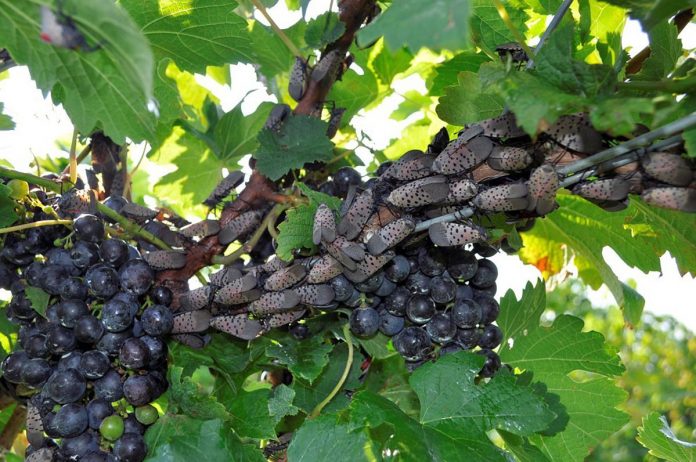UNIVERSITY PARK, Pa. — As summer progresses — and spotted lanternflies make themselves at home just about anywhere, including on residential properties — frustrated homeowners might find themselves wrestling with the idea of using insecticides to vanquish the insect interlopers.
Before doing so, homeowners should do their research, weigh the pros and cons and seek professional advice if needed, according to a Penn State Extension educator based in Montgomery County who is all too familiar with the destructive pest.
Horticulture educator Emelie Swackhamer stresses that though it’s understandable to worry about the effect the spotted lanternfly may have, residents should try nontoxic options, such smashing or trapping before turning to insecticides.
Because there are safety, environmental and sometimes regulatory concerns that accompany the use of insecticides, she offered the following tips to help homeowners in making their decision:
– Only use registered insecticides. Recipes for homemade sprays made from cleaning, automotive, cooking or other household products might be more harmful to the environment or your plants than people realize. Insecticides that are registered with the Environmental Protection Agency have been tested for safety and efficacy.
In Pennsylvania, the site where you plan to use an insecticide must be listed on the product label. For example, if you want to spray an insecticide on an ornamental tree, the product label has to say that it is registered for use on ornamental trees. If you want to spray an insecticide on a grapevine, the product label must say that it is registered for use on grapes.
Swackhamer warned against the use of home remedies such as cleaning and other household supplies as they can be unsafe for humans, pets, wildlife and plants. In some cases, the application of home remedies may be illegal.
– Read the label and follow all directions. Consumers can find labels for insecticides online and read them before buying anything. Some labels are formatted as booklets, which are taped onto the side of the product container.
Read all the information thoroughly before using the insecticide. Swackhamer suggests using a highlighter to mark the specific directions for the way that the product will be used, which will make it easier to go back and find the right section when it is time for a reapplication.
– Choose the least toxic insecticide that is effective. When choosing an insecticide, Swackhamer recommends looking for products that include a logo from the Organics Material Review Institute (OMRI) on their label. “OMRI Listed” products are allowed for use in certified organic operations under the USDA National Organic Program.
Another way to compare toxicity between insecticides is to look for the signal word, which is required to be prominently displayed on the front of most insecticide product labels. Most insecticides have one of three signal words on the label, Swackhamer pointed out. “Caution” appears on insecticides with lower toxicity, “warning” appears on insecticides that have medium toxicity, and “danger” appears on insecticides with the highest toxicity or greatest risk to eyes or skin.
Some insecticide labels display “Danger: Poison” with a skull and crossbones symbol because they are extremely toxic.
– Protect against insecticide exposure. When using any insecticide, follow the label directions and use safe practices. Use appropriate, properly functioning application equipment, and wear the recommended protective clothing and gear.
More recommendations on spotted lanternfly control are available on the extension website at extension.psu.edu/spotted-lanternfly-management-for-homeowners.










